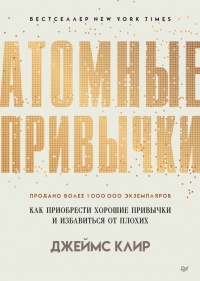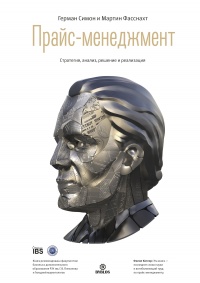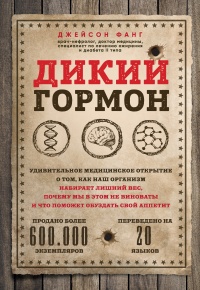Читать книгу "Руководство по закупкам - Джанкарло Спаньоло"
Шрифт:
Интервал:
Закладка:
Fuller J.G. The Gentleman Conspirators: The Story of the Price-Fixers in the Electrical Industry. N.Y.: Grove Press, 1962.
Gavil A.I., Kovacic W.E., Baker J.B. Antitrust Law in Perspective: Cases, Concepts and Problems in Competition Policy. St. Paul: West Group, 2002.
Genesove D., Mullin W.P. Rules, Communication and Collusion: Narrative Evidence from the Suger Institute Case // American Economic Review. 2001. 91. Р. 379–398.
Global Competition Review. 2004. Cartel Regulation. (www.globalcompetitionreview.com)
Graham D.A., Marshall R.C. Collusive Bidder Behavior at Single-Object Second Price and English Auctions // Journal of Political Economy. 1987. 95. Р. 1217–1239.
Grossman P.Z. (ed.) How Cartels Endure and How They Fail: Studies of Industrial Collusion. Northhampton, MA: Edward Elgar, 2004.
Guersant O. European Commission Adopted Ten Decisions Imposing Heavy Fines on Hard Core Cartels in 2001, Directorate for Competition, European Commission. 2002.
Haberbush K.L. Limiting the Government’s Exposure to Bid Rigging Schemes: A Critical Look at the Sealed Bidding Regime // Public Contract Law Journal. 2000. 30. Р. 97–122.
Hendricks K., Porter R.H. An Empirical Study of an Auction with Asymmetric Information // American Economic Review. 1988. 78. Р. 865–883.
Herling J. The Great Price Conspiracy: The Story of the Antitrust Violations in the Electrical Industry. Washington: R. B. Luce, 1962.
Hirshleifer J., Riley J.G. The Analytics of Uncertainty and Information. Cambridge: Cambridge University Press, 1993.
International Competition Policy Advisory Committee (ICPAC) to the Assistant Attorney General for Antitrust. Final Report, US Department of Justice, 2000.
Klemperer P. What Really Matters in Auction Design // Journal of Economic Perspectives. Winter 2002. 16. Р. 169–189.
Kolasky W.J. Antitrust Compliance Programs: The Government Perspective, Antitrust Division, US Department of Justice. 2002. (http://www.usdoj.gov/atr/public/speeches/11534.htm)
Kovacic W.E., Shapiro C. Antitrust Policy: A Century of Economic and Legal Thinking // Journal of Economic Perspectives. 2000. 14. Р. 43–61.
Kovacic WE. Private Monitoring and Antitrust Enforcement: Paying Informants to Reveal Cartels // George Washington Law Review. 2001. 69. Р. 766–797.
Kovacic W.E. The Modern Evolution of US Competition Policy Enforcement Norms // Antitrust Law Journal. 2003. 71. Р. 377–478.
Lopomo G., Marshall R.C., Marx L.M. Inefficiency of Collusion at English Auctions // Contributions to Theoretical Economics. 2005. 5 (1). Article 4.
Mailath G., Zemsky P. Collusion in Second Price Auctions with Heterogeneous Bidders // Games and Economic Behavior. 1991. 3. Р. 467–486.
Marshall R.C., Marx L.M. Bidder Collusion. Forthcoming // Journal of Economic Theory. 2006.
Marshall R.C., Marx L.M., Raiff M.E. Cartel Price Announcements: The Vitamins Industry: Working Paper. Duke University, 2005.
Marshall R.C., Meurer M.J. Bidder Collusion and Antitrust Law: Refining the Analysis of Price Fixing to Account for the Special Features of Auction Markets // Antitrust Law Journal. 2004. 72. Р. 83–118.
McAfee R.P., McMillan J. Bidding Rings // American Economic Review. 1992. 82. Р. 579–599.
Motta M., Polo M. Leniency Programs and Cartel Prosecution // International Journal of Industrial Organization. 2003. 21. Р. 347–379.
Myerson R.B. Optimal Auction Design // Mathematics of Operations Research. 1981. 6. Р. 58–73.
Organization for Economic Cooperation and Development (OECD). Cartels: Sanctions Against Individuals. 2005. (http://www.oecd.org/dataoecd/61/46/34306028.pdf)
Riley J.G., Samuelson W.F. Optimal Auctions // American Economic Review. 1981. 71. Р. 381–392.
Robinson M.S. Collusion and the Choice of Auction // RAND Journal of Economics. 1985. 16. Р. 141–145.
Scott S. Cartel Enforcement: International and Canadian Developments // B. Hawk (ed.) International Antitrust Law and Policy, Fordham Corporate Law Institute. 2005. Р. 33–56.
Spagnolo G. Leniency and Whistleblowers in Antitrust. Forthcoming // P. Buccirossi (ed.) Handbook of Antitrust Economics. MIT Press, 2005.
Spratling G.R. Detection and Deterrence: Rewarding Informants for Reporting Violations // George Washington Law Review. 2001. 69. Р. 798–823.
Stigler G.J. A Theory of Oligopoly // Journal of Political Economy. 1964. 72. Р. 44–61.
Vann D.E., Jr., Litwan E.E. Recent Developments in International Cartel Enforcement // Getting the Deal Through: Cartel Regulation (Global Competition Review). 2004.
Williamson O.E. Markets and Hierarchies: Analysis and Antitrust Implications. N.Y.: The Free Press, 1975.
Wils W.P.J. Is Criminalization of EU Competition Law the Answer? // World Competition. 2005. 28 (2). Р. 117–159.
Wils W.P.J. Should Private Antitrust Enforcement Be Encouraged in Europe? // World Competition. 2003. 26. Р. 473–488.
Иван Ленгвилер, Эльмар Вольфштеттер[453]
Торги являются эффективным механизмом для закупки товаров. Именно поэтому их используют уже в течение многих веков и стали еще более активно использовать в настоящее время. Но нельзя сказать, что они не подвержены манипуляциям через механизмы сговора и коррупции. Сговор означает, что участники торгов координируют свои действия с целью повышения цены. Коррупция означает, что лицо, которое проводит аукцион, т. е. аукционист, искажает правила аукциона в пользу участника(ов) в обмен на взятки. Сговор и коррупция иногда взаимосвязаны. В этой главе, однако, мы сосредоточим наше внимание исключительно на коррупции.
Под термином «коррупция» мы понимаем все виды поведения, когда лицо, находящееся на ответственной должности, злоупотребляет ею для собственной выгоды. В своем руководстве по вопросам коррупции Всемирный банк определяет «коррупционную практику» как «предложение, дачу, получение или вымогательство прямым или косвенным образом любых предметов, представляющих ценность, с целью оказания влияния на действия должностного лица в процессе закупок или исполнения договора[454]. Конкретно же в условиях торгов лицом, находящимся на ответственной должности, является аукционист, который действует от имени закупщика, и участники торгов, которые обязались играть по правилам. Разумеется, что если закупщик и аукционист являются одним и тем же лицом, то здесь нет возможности для коррупции[455]. Однако если закупщик является фирмой с широкой системой собственности (котируемой на бирже компанией, например), то обязательно будет агент, который примет на себя роль аукциониста от лица закупщика. То же относится и к государственному учреждению. Не имеет значения, представляет ли аукционист независимого эксперта или государственного служащего. В обоих случаях аукционист и закупщик не тождественны, и коррупция является потенциальной проблемой.
Внимание!
Сайт сохраняет куки вашего браузера. Вы сможете в любой момент сделать закладку и продолжить прочтение книги «Руководство по закупкам - Джанкарло Спаньоло», после закрытия браузера.










